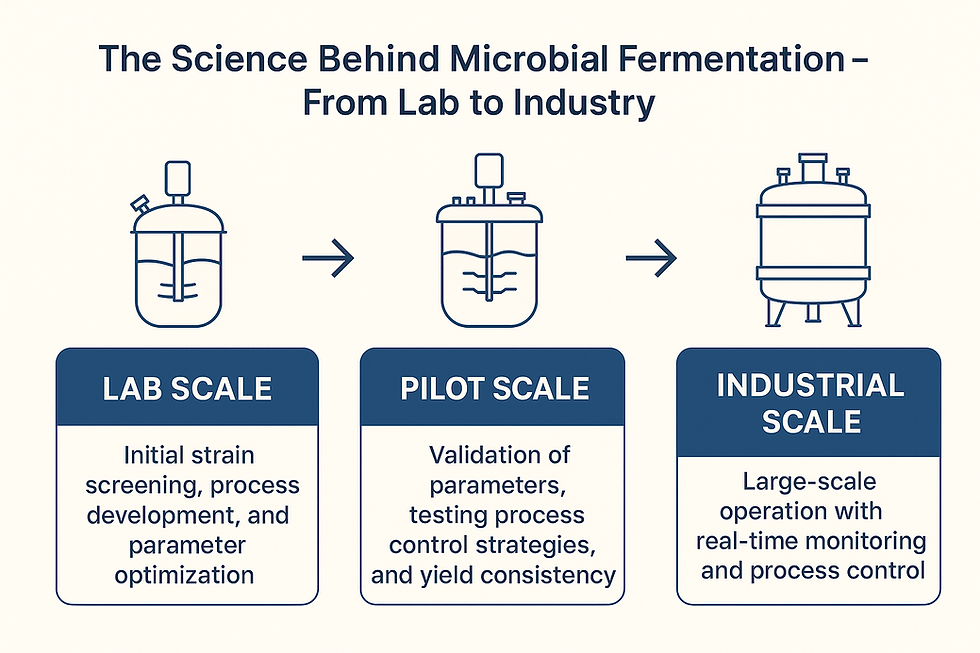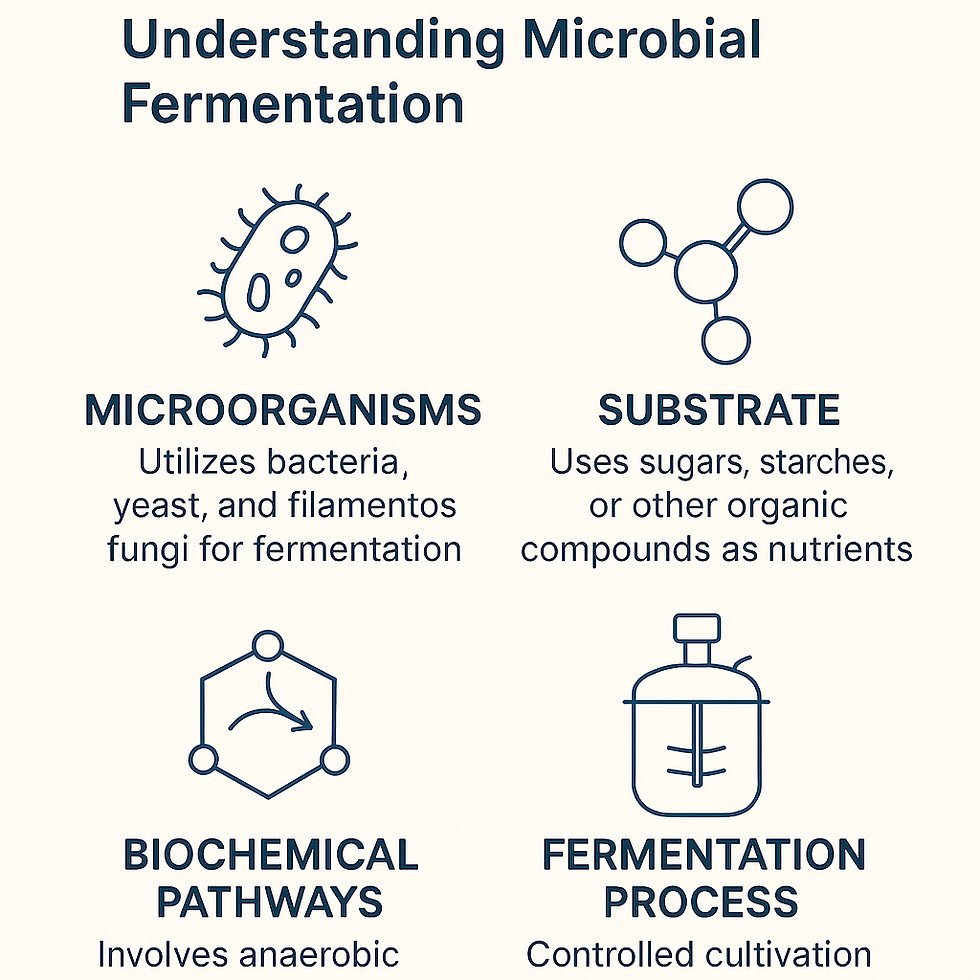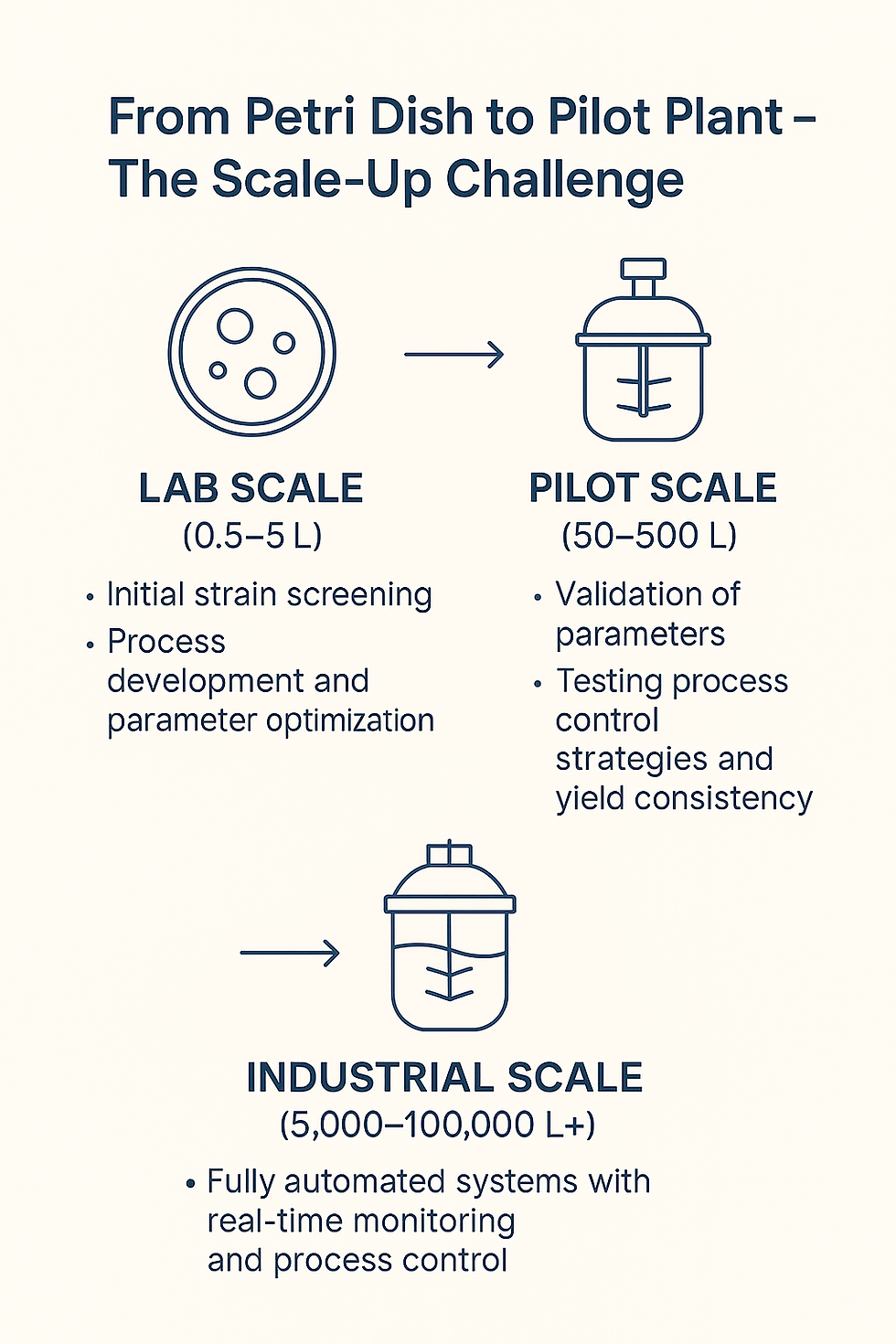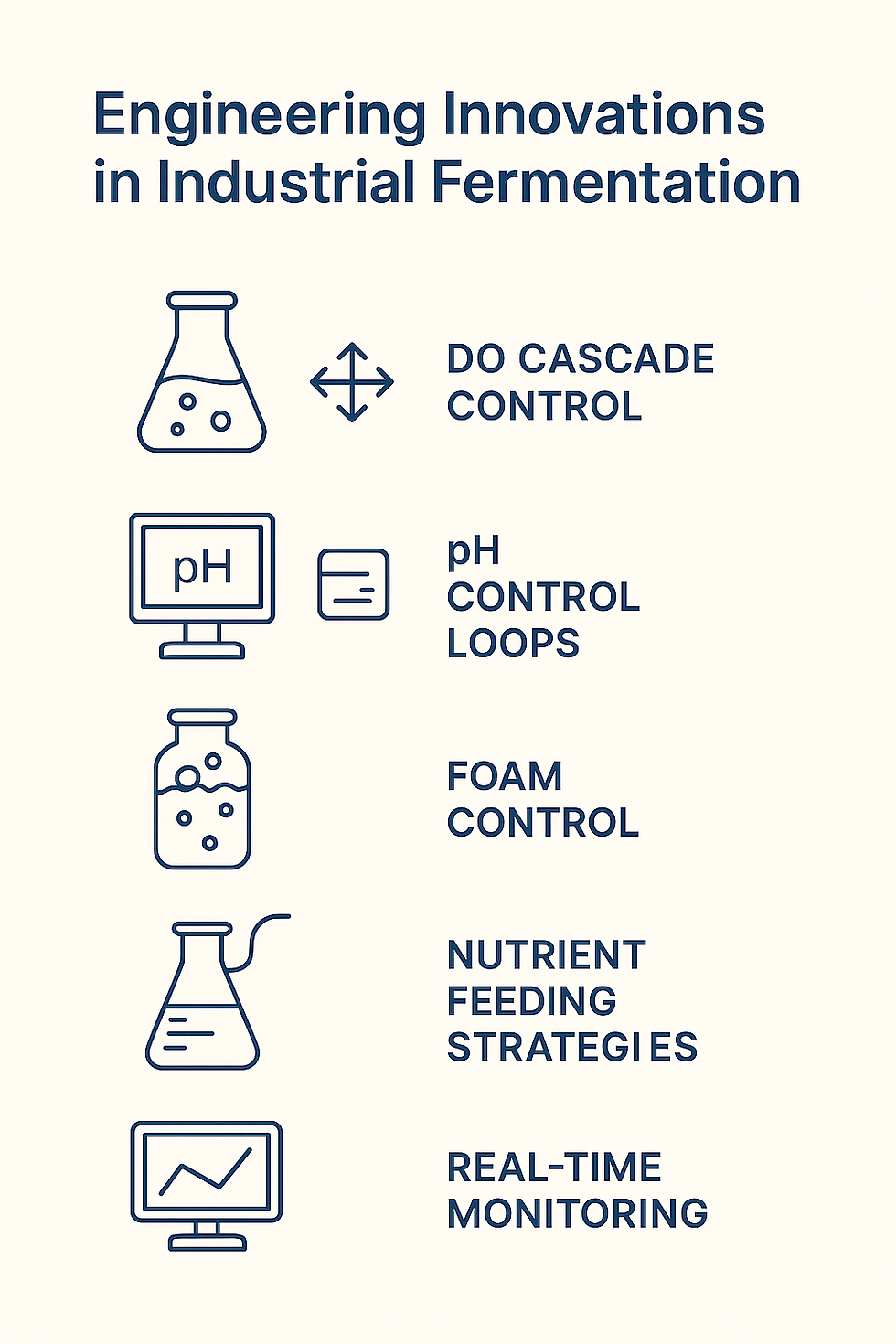The Science Behind Microbial Fermentation – From Lab to Industry
- Arun Luthra
- Aug 11
- 3 min read

The Science Behind Microbial Fermentation – From Lab to Industry
Microbial fermentation is one of humanity’s oldest biotechnological processes — from baking bread and brewing beer thousands of years ago to producing life-saving pharmaceuticals and sustainable proteins today. But behind this ancient art lies cutting-edge science and engineering that transforms small-scale experiments into large-scale industrial success. The Science Behind Microbial Fermentation
1. The Biological Foundation – Understanding Microbial Fermentation

At its core, microbial fermentation is the metabolic process in which microorganisms such as bacteria, yeast, or fungi convert organic substrates (like sugars) into valuable products. Depending on the organism and process design, these products can range from ethanol and organic acids to enzymes, antibiotics, pigments, and proteins.
Key microbial pathways:
Lactic Acid Fermentation – Lactic acid bacteria convert sugars into lactic acid (e.g., in yogurt, cheese).
Alcoholic Fermentation – Yeast (e.g., Saccharomyces cerevisiae) converts sugars into ethanol and CO₂.
Mixed Acid and Butanediol Fermentation – Common in industrial bacteria such as Enterobacter species.
Secondary Metabolite Production – Fungi and actinomycetes produce antibiotics, pigments, and bioactive compounds.
Critical biological parameters:
Temperature
pH
Dissolved Oxygen (DO)
Nutrient composition
Agitation & aeration for uniform mixing
2. From Petri Dish to Pilot Plant – The Scale-Up Challenge

While microbial behavior can be studied in small flasks or bioreactors, translating results to industrial volumes (from a few liters to thousands of liters) is a complex challenge.
Why scale-up is difficult:
Oxygen transfer limitations – Microbes require oxygen for aerobic processes, and oxygen solubility decreases in larger volumes.
Heat removal – Fermentation generates metabolic heat; industrial systems need efficient cooling.
Shear sensitivity – Some microorganisms are fragile and can be damaged by excessive mixing.
Maintaining sterility – Larger systems increase the risk of contamination.
The scale-up process involves:
Lab scale (0.5–5 L): Initial strain screening, process development, and parameter optimization.
Pilot scale (50–500 L): Validation of parameters, testing process control strategies, and yield consistency.
Industrial scale (5,000–100,000 L+): Fully automated systems with real-time monitoring and process control.
3. Engineering Innovations in Industrial Fermentation

Industrial fermentation demands precision. Advanced bioreactor design and process automation ensure optimal microbial performance.
Modern engineering controls include:
DO Cascade Control – Adjusts agitation and aeration rates to maintain optimal dissolved oxygen levels.
pH Control Loops – Automated acid/base dosing for stable pH.
Foam Control – Mechanical breakers or automated antifoam dosing.
Nutrient Feeding Strategies – Fed-batch or continuous feeding to avoid nutrient depletion or overflow metabolism.
Real-Time Monitoring – Optical sensors for biomass, inline spectroscopy for metabolites.
With Industry 4.0 integration, IoT-connected fermenters now allow remote monitoring, predictive maintenance, and AI-driven process optimization.
4. Applications – From Food to Pharma to Sustainable Futures

The versatility of microbial fermentation has transformed multiple sectors:
Food & Beverages – Dairy cultures, probiotics, beer, wine, plant-based proteins.
Pharmaceuticals – Antibiotics, vaccines, therapeutic proteins.
Agriculture – Biofertilizers, biopesticides.
Sustainable Materials – Bioplastics, biofuels, and alternative leather.
5. Amerging Technologies’ Role in Scaling Fermentation Excellence
At Amerging Technologies, we specialize in bioprocess equipment manufacturing and process automation, offering solutions from lab to industrial scale:
Custom-built fermenters & bioreactors from 1 L to 100,000 L+.
Complete process integration – upstream, downstream, and utilities.
Advanced automation systems with SCADA and IoT connectivity.
Global installation & service support, ensuring reliability and productivity.
By combining scientific expertise with engineering excellence, we help clients across biotech, pharma, food-tech, and agritech turn microbial potential into commercial success.




Comments